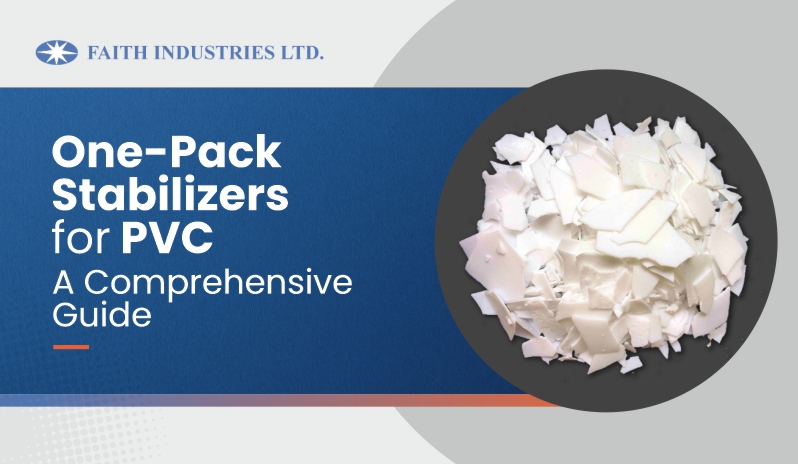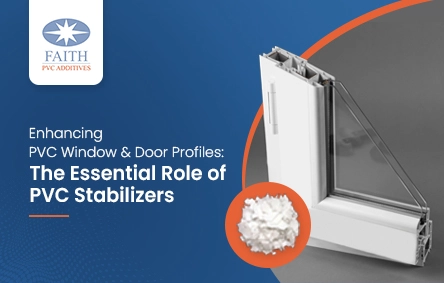CPVC stands for Chlorinated Polyvinyl Chloride. CPVC compound refers to a type of thermoplastic material that is derived from polyvinyl chloride (PVC) through a chlorination process. In this process, chlorine is added to the PVC resin, resulting in a more durable and heat-resistant material. CPVC is known for its ability to withstand higher temperatures compared to traditional PVC, making it suitable for applications where regular PVC might deform or break down.
Chemical Structure of CPVC
The chemical structure of CPVC (Chlorinated Polyvinyl Chloride) is characterized by the introduction of chlorine atoms into the polyvinyl chloride (PVC) polymer chain. The chlorination process involves the replacement of hydrogen atoms in the PVC structure with chlorine atoms. This modification results in a polymer with enhanced properties, particularly in terms of heat and chemical resistance.
The general chemical formula for CPVC can be represented as follows:
−CH2−CHCl−n[CH2−CH(Cl)−]−
Here, represents the degree of chlorination, indicating the number of chlorine atoms introduced into the polymer chain. The chlorination occurs at the methylene (-CH2-) groups in the PVC, leading to a more complex and chlorine-rich molecular structure.
Advantages of CPVC Compounds
Chlorinated Polyvinyl Chloride (CPVC) compounds offer several key advantages:
- High-Temperature Resistance: Well-suited for hot water systems and industrial processes.
- Chemical Resistance: Highly resistant to acids, bases, and industrial chemicals.
- Mechanical Strength: Retains strength and durability, particularly in impact resistance.
- Flame Retardancy: Inherently flame-retardant and self-extinguishing.
- Electrical Insulation: Possesses good electrical insulation properties.
- Corrosion Resistance: Enhanced resistance to corrosion in corrosive environments.
- Low Thermal Conductivity: Acts as an effective insulator in applications with minimized heat transfer requirements.
- Ease of Installation: Lightweight and easy to install, reducing construction and plumbing project costs.
- Versatility in Applications: Adaptable for use in various industries, including water supply, chemical processing, and HVAC systems.
- Cost-Effectiveness: Cost-effective due to easy installation, low maintenance, and durability.
Uses of CPVC Compounds
Chlorinated polyvinyl chloride (CPVC) compounds find diverse applications across various industries due to their unique combination of properties, including heat resistance, chemical resistance, and durability.
- Efficient Plumbing Systems: Facilitating hot and cold-water distribution in homes and businesses.
- Enhanced Fire Protection: Constructing fire sprinkler systems with heightened fire resistance.
- Industrial Solutions: Handling corrosive fluids seamlessly across various industrial processes.
- Mining Reliability: Transporting abrasive slurries and chemicals efficiently in mining operations.
- Chemical Industry Support: Providing robust piping systems for the safe transport of corrosive chemicals.
- Power Generation Confidence: Supplying durable pipes and fittings for hot water, steam, and cooling fluids in power plants.
- Dependable Electroplating: Ensuring the reliable transport of plating solutions in electroplating applications.
- Semiconductor Manufacturing Purity: Maintaining chemical purity in semiconductor manufacturing processes through the handling of ultra-pure water.
- Water Treatment Integrity: Contributing to corrosion-resistant piping solutions in water treatment plants.
- Versatile Construction Applications: Playing a crucial role in diverse construction applications, from water supply lines to HVAC systems.
CPVC Formulation Process
Ingredients Used in CPVC Formulation:
- Polyvinyl Chloride (PVC): The base polymer is PVC, derived from vinyl chloride monomers.
- Chlorinating Agents: Chemicals like chlorine gas or compounds containing chlorine are introduced to replace some hydrogen atoms in PVC.
Manufacturing Process Overview:
- Polymerization: -Vinyl chloride monomers undergo polymerization to form the base PVC polymer.
- Chlorination: -PVC is chlorinated using methods like a free-radical chlorination process. -Chlorine atoms replace hydrogen in the polymer chain, forming CPVC. -The degree of chlorination can vary, affecting CPVC’s properties.
- Cooling and Washing: -The chlorinated product is cooled and washed to remove residual chemicals and impurities.
- Drying: -The CPVC compound is dried to remove any remaining moisture.
- Granulation/Pelletization: – The dried CPVC is typically converted into granules or pellets for easier handling and processing.
Quality Control Measures in CPVC Production:
- Chlorination Control: -Precise control of the chlorination process is essential to achieve the desired chlorine content and properties.
- Residual Chlorine Testing: -Monitoring and testing residual chlorine to ensure that it meets specified standards.
- Molecular Weight Control: -Ensuring consistent molecular weight during polymerization for uniform product quality.
- Impurity Removal: -Rigorous washing and drying processes to remove impurities and residual chemicals.
- Particle Size Control: -Maintaining control over the size of CPVC granules or pellets for consistent product performance.
- Thermal Stability Testing: -Testing the CPVC’s thermal stability to verify its resistance to high temperatures.
- Quality Testing of End Products: -Conducting comprehensive tests on final CPVC products, including mechanical, thermal, and chemical resistance tests.
The CPVC formulation process involves a precise combination of raw materials and controlled chemical reactions, with strict quality control measures to ensure the consistent production of a high-quality and reliable product. Environmental considerations and adherence to regulations are integral components of responsible CPVC manufacturing.
Tips for Handling CPVC Compounds
Storage and Transportation:
- Dry Storage: Store CPVC compounds in a dry area to prevent moisture absorption, which can affect the material’s properties.
- Avoid Sunlight Exposure: Keep CPVC away from direct sunlight during storage, as ultraviolet (UV) radiation may have adverse effects on the material.
Installation Practices:
- Cutting Tools: Use sharp, clean cutting tools to prevent burrs and ensure precise cuts on CPVC pipes and fittings.
- Solvent Cement Compatibility: Ensure the solvent cement used for joining CPVC components is compatible with CPVC material and follows manufacturer recommendations.
- Avoid Over-Tightening: When installing CPVC fittings, avoid over-tightening to prevent damage to the material.
Maintenance Practices:
- Regular Inspections: Periodically inspect CPVC installations for signs of wear, leaks, or damage.
- Proactive Repairs: Address any identified issues promptly to prevent further damage and maintain system efficiency.
Training and Certification:
- Qualified Installers: Ensure that individuals handling CPVC installations are trained and certified to work with the material.
- Stay Informed: Stay updated on industry best practices and any new guidelines related to CPVC handling and installation.
By following these tips and best practices, users can optimize the handling, installation, and maintenance of CPVC compounds, ensuring the longevity and reliability of the plumbing or piping system.
Conclusion
CPVC compounds stand as a cornerstone in modern materials science, offering unique properties ideal for various applications. From plumbing to industry, CPVC is a material of choice for engineers and project managers. To harness its full potential, stay informed about CPVC’s formulation, applications, and innovations.
For high-performance CPVC Compounds, consider Faith Industries Ltd, a leading manufacturer specializing in CPVC Lubricant and CPVC Pipe Compound. Trust in our commitment to quality and innovation for reliable and advanced solutions. Embrace the possibilities offered by CPVC and optimize your projects with Faith Industries Ltd.












